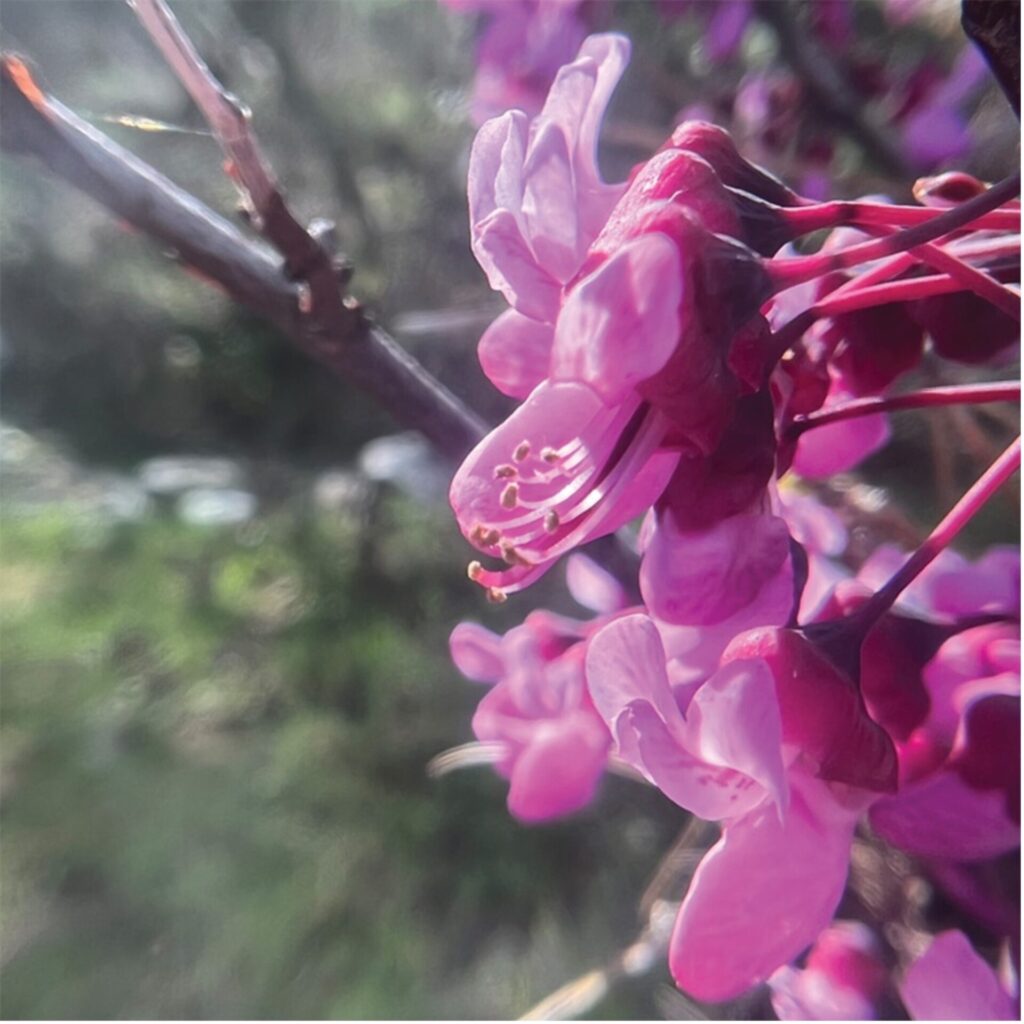December 31, 2024
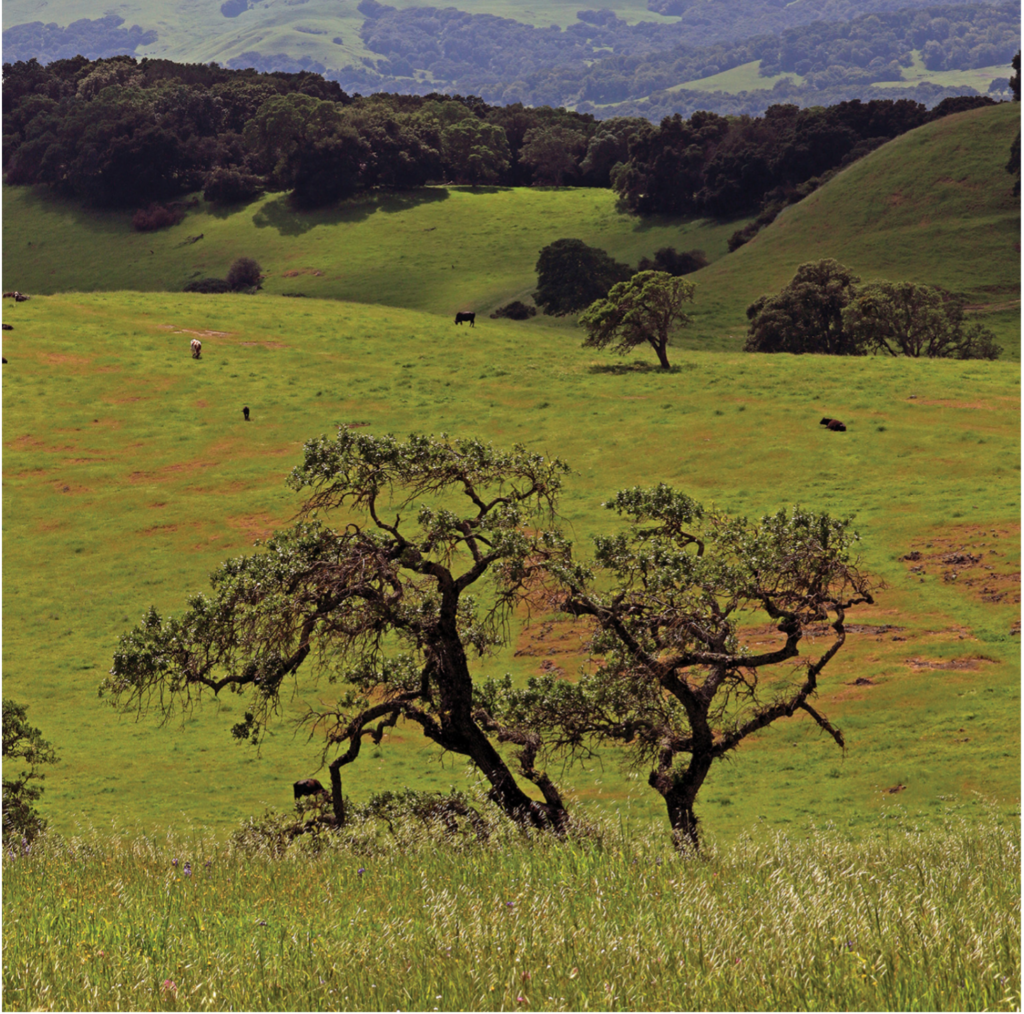
We welcome you to our homeland, where you can wander through 1,500 acres of natural beauty while taking in views of Mount Diablo, the glittering Delta, and the wildflowers that return each spring. New walking trails, majestic oaks, and volcanically formed hills will inspire visitors of all ages in the Patwino Worrtla Kodoi Dihi Open Space Park.
For the Yocha Dehe Wintun Nation, Solano County’s new open space park is sacred land. We chose to name it Patwino Worrtla Kodoi Dihi, which means “Southern Rock Home of the Patwin People.” It is pronounced: Put.win.no War.klaw Kaw.doy De.he.
With this name, we honor the profound cultural and historical connection that the Patwin have with this land. Our ancestors established villages throughout the region and traveled between these villages for ceremonies and trade. They fished for salmon and gathered the acorns, which are called t’uhka. Acorns were central to everyday life in Patwin villages and a staple of the people’s diet. They were ground on bedrock down by the creeks that run throughout this beautiful space.
As I walk through the park and see children and families enjoying this land, I take a moment to imagine what it was like when my ancestors lived here with their families. They grew up on this land looking into the sky to spot a loklok (red-tailed hawk), playing in the tall grass, and running down the hillsides. They experienced the space with awe and wonder, just as we hope it will be experienced today.
Now, the open space park stands as a living tribute to our deep bond with this land that we have cared for and tended to for centuries. We are eager to share this sacred space with the public while ensuring it remains a place of cultural reverence and natural beauty. We recognize this is a remarkable opportunity to educate residents and visitors about the Patwin and our connection to the region.
Protecting the Land Through Partnerships
In late August 2024, we gathered with our partners in the Solano Land Trust and Solano County to open the park and celebrate our collective efforts to preserve this land. Since the 1970s, the area has been at high risk for development. After Solano County approved a 360-home residential project in 2008, the local community, state agencies, and Solano Land Trust banded together to raise funds to purchase the land for $13.5 million and prevent the housing development from moving forward. This monumental effort showed the power of community action and underscored how important it is to protect our open spaces from overdevelopment.

In 2020, Yocha Dehe took additional steps to preserve the land and improve access for the public. We contributed more than $1.2 million to those efforts through Doyuti T’uhkama, a fund dedicated to improving the lives of Native people and the citizens of California that has granted tens of millions of dollars to projects like this, which make a lasting impact on the well-being of all people for generations. This significant contribution not only helped preserve the land but also highlights our desire to foster a deeper relationship with the county.
Doyuti T’uhkama means “to give the acorn” in the Patwin language. The acorn is a cherished symbol that reflects Yocha Dehe’s commitment to sharing its resources. With the financial contribution, we solidified our commitment to enhance the preserve, improve access, and create park infrastructure. We are deeply grateful for the partnership with Solano Land Trust in prioritizing the protection of this cultural site, as it encompasses the Tribe’s ancestral territory. Our shared goal has always been to incorporate educational experiences that highlight the natural abundance and cultural significance of the land to the Patwin so that visitors can learn about its history, its importance, and the stories that connect us all to this special place.
Without the partnership of the Solano Land Trust and Solano County Parks this park would not exist. The Patwino Worrtla Kodoi Dihi Open Space Park is a moving example of what can be accomplished when communities come together with a mutual vision of preserving natural landscapes and honoring cultural heritage. Through collaboration, we have ensured that this beautiful and significant land will be protected for future generations.
Patwin Roots
Park visitors are welcomed by interpretive signs depicting the history and culture of the Patwin. It was not too long ago that the Patwin language was outlawed in an effort to erase Native cultures. There are very few who still hold on to the language, which was carried from the past by elders who were faithful caretakers of Patwin culture.
I am grateful that the next generation now has the opportunity to learn the Patwin language, at the Yocha Dehe Wintun Academy. Since 2008, tribal council member and treasurer Leland Kinter has been teaching the Patwin language to his students. The lessons started with one elementary-school class a week and now also include preschool, kindergarten, middle school, and high school classes. In addition to conversational language, Treasurer Kinter uses a mixture of learning through games, intensive grammar, and culturally specific topics for lessons. Everyday conversation focuses on making Patwin language relevant.
Those who were fortunate enough to have the language passed down to them helped create the Patwin signs that are on display throughout Patwino Worrtla Kodoi Dihi Open Space Park. These signs are a vital tool for cultural preservation, allowing our tribe to share our history and language through symbols and imagery. Fostering a connection with our heritage raises awareness and promotes an understanding among non-Native communities.
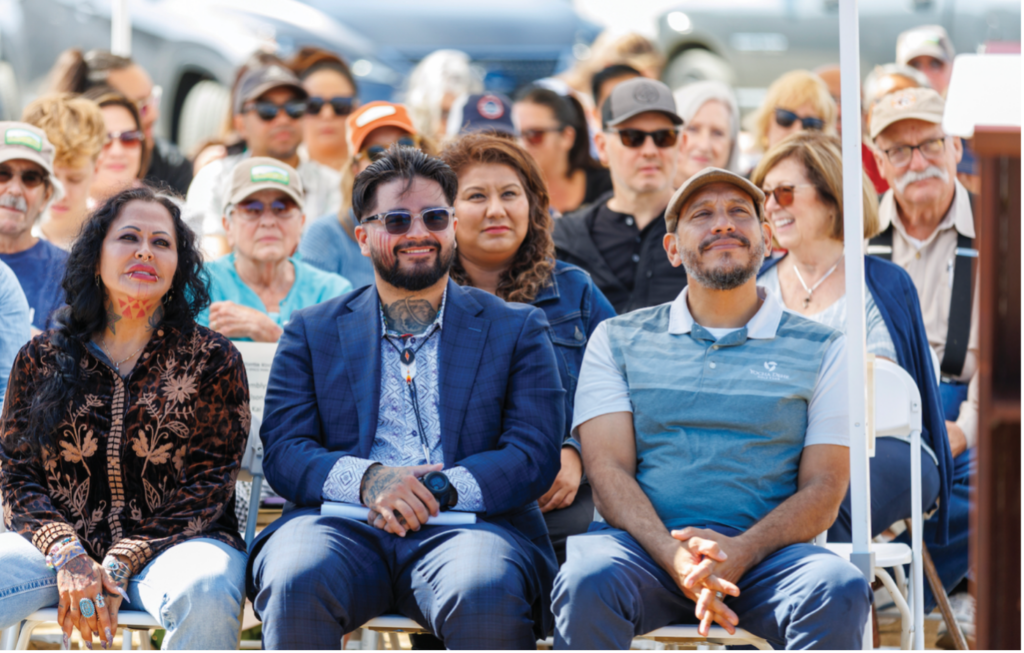
Exploring the Park
Everyone is welcome at Patwino Worrtla Kodoi Dihi Open Space Park. All ages, all abilities, all walks of life. Fourteen miles of trails are available to hikers, mountain bikers, and equestrians. At the heart of the park stands the All People’s Trail, designed so that people in wheelchairs, walkers, and strollers can fully enjoy the outdoors. From seniors to schoolchildren, people will be able to enjoy this special place in a way that’s meaningful to them.
The park will also support those who enjoy more rugged long-distance hikes. In addition to being a county park, Patwino Worrtla Kodoi Dihi serves as a connector to the Bay Area Ridge Trail, a 550-mile multiuse trail that will encircle the Bay Area when completed.Visitors will also find a sensory garden with interpretive and educational signs designed for young children and families. In the garden space, people are welcome to handle and smell the plants to engage their senses and immerse themselves in the experience.

Visitors may encounter cattle wandering along the pristine trails. Led by a fifth-generation rancher, cattle here are essential to the management strategy for this open space. By keeping grasses low, cattle decrease fire risks and improve growing conditions for some native plants.
Along with the animal life, stunning wildflowers grow on this land. The best time to view the blooms is late January through June. The most vibrant tend to emerge in March through April. Common spring flowers include sky lupine, California golden poppies, blue dicks, purple owl’s clover, seep monkey flower, and goldfields.
The rare nodding harmonia (Harmonia nutans) also lies within this park, and it is one of the only known locations where the bright yellow blooms have been found. Every spring, volunteers participate in an annual count of the flowers.
In the Patwin language
Here are some of the interpretive signs featuring local plants that visitors will encounter.
K’ao (Elderberry). Elderflowers bloom March through July and are made into a tea used to lower fever. In summer, elderberries are made into jelly and used as a first line of defense against bronchitis and influenza.
Elderflowers bloom March through July and are made into a tea used to lower fever. In summer, elderberries are made into jelly and used as a first line of defense against bronchitis and influenza.
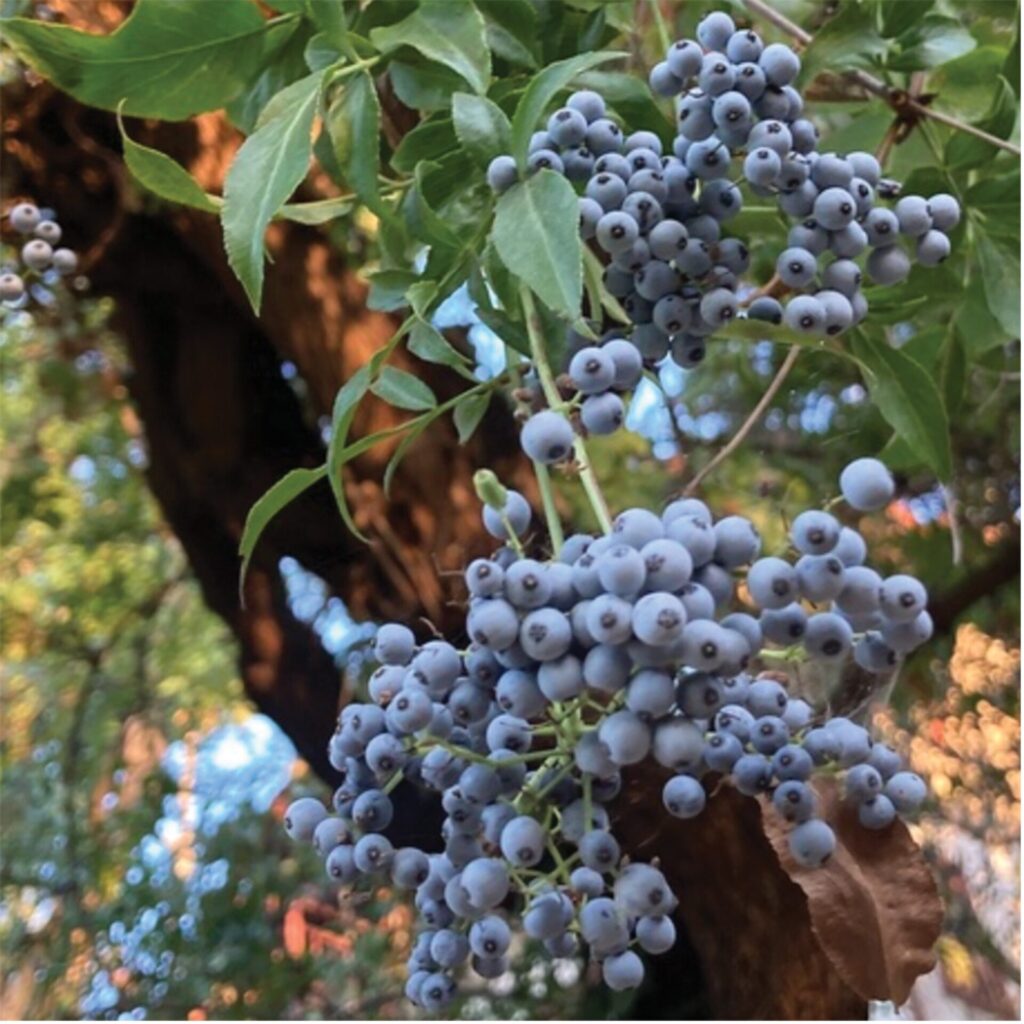
Tihtu (Soap Root). The Patwin used the crushed bulb to make soap, which gave the plant its name. They also roasted the bulb to make glue and made brushes from the fibrous bulbs to clean baskets and mortars. The plant had several medicinal uses as an antiseptic, a laxative, and a pain-relieving body rub. The delicate white flowers open at sunset and close by morning.
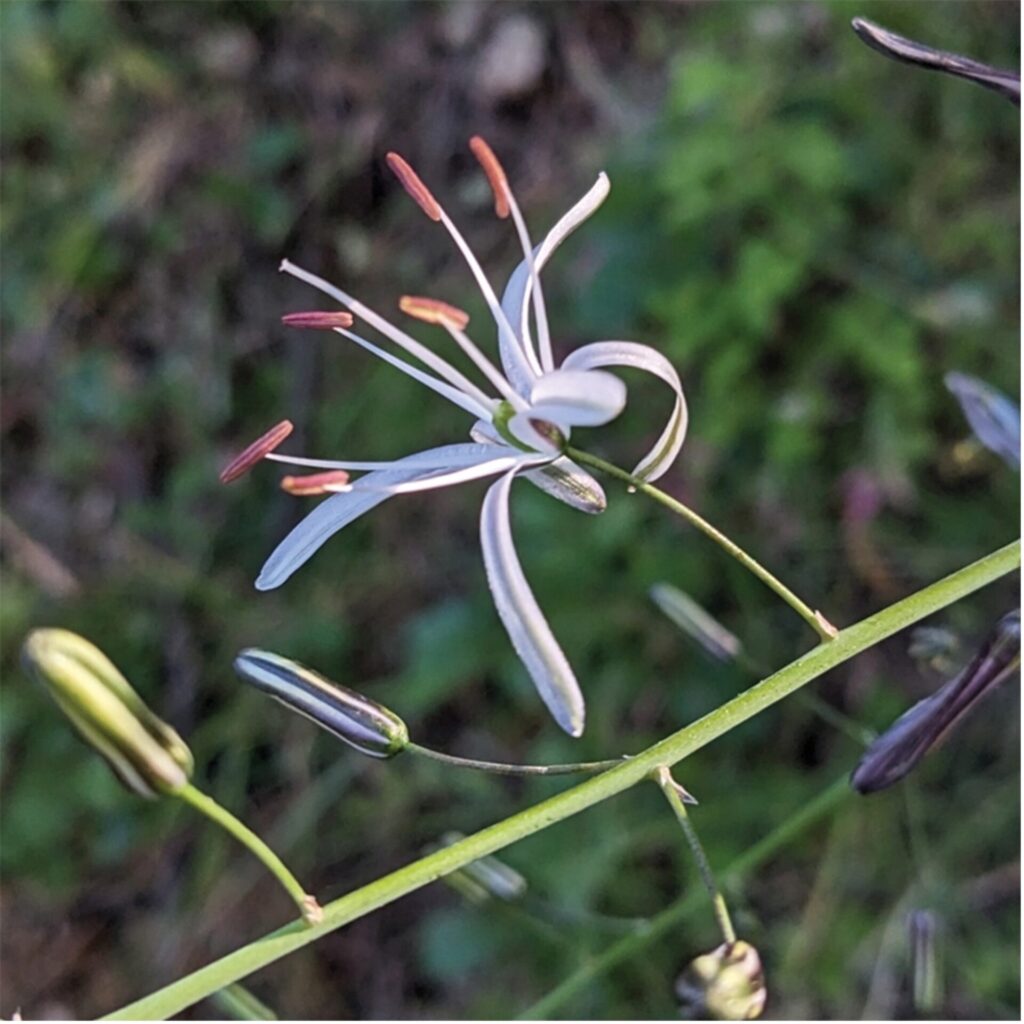
Lul (Redbud). Bright magenta blossoms make the redbud easy to spot in the spring. The wine-red branches were used to make baskets, and the roots served as medicine for fevers and congestion. The plant is a member of the pea family, and the twigs, leaves, and seedpods were eaten and brewed as tea.
